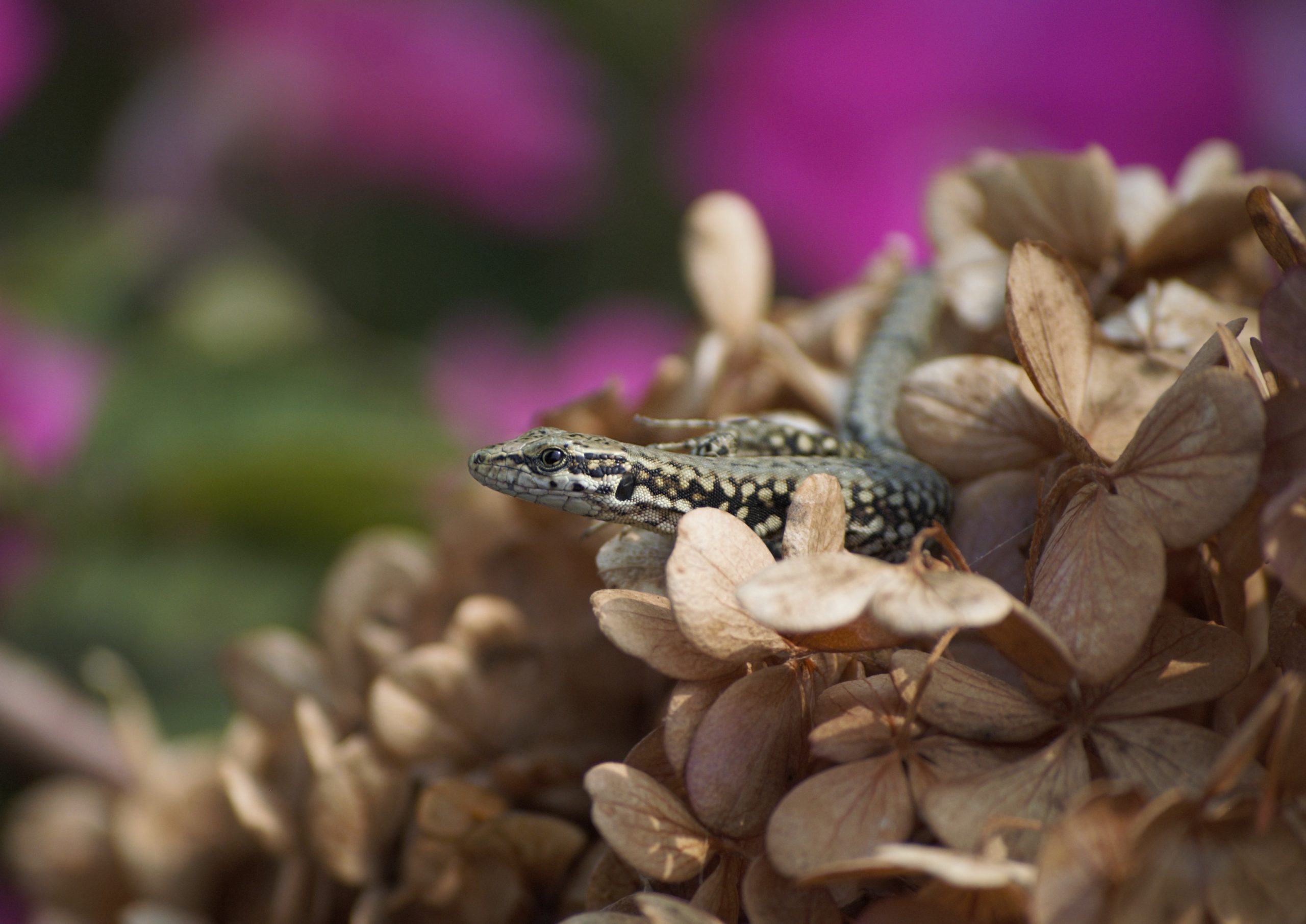There are more mythical reptiles than just dragons! Learning about lesser-known creatures can inspire our stories, broaden our horizons, and just be super cool and interesting.
Today we’re looking at eight different kinds of mythical reptilian and amphibian creatures that may be often overlooked. Writing prompts are included just for added fun and to get the creative sparks flying! 🙂
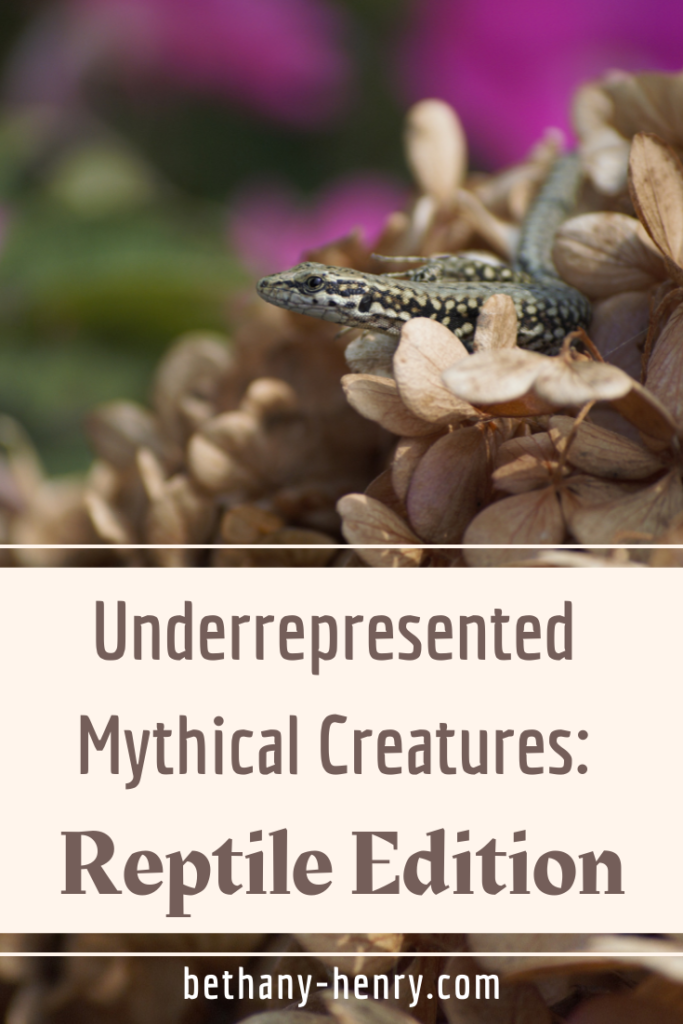
Note: As with most myths and folklore, the information about these creatures is varied and hard to pin down. Most of what I’ve gathered and condensed here is information from Wikipedia, MythOrTruth.com, Ancient Origins, and Brittanica.com.
Beyond my notes, I’d encourage you to research further! There is a wealth of material to be found.
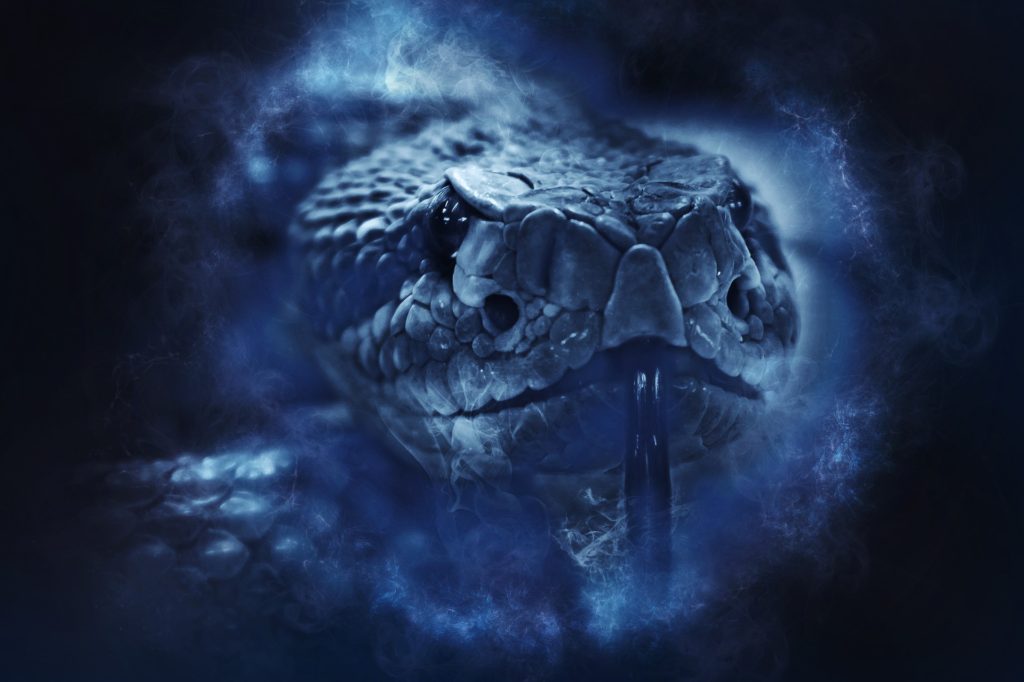
Basalisk
Also called Cockatrice.
The Basalisk is a serpent which, while small, is known for being extremely deadly with the ability to kill all plants and animals with simply its gaze or breath. The weasel is known to be its weakness and is immune to its venom.
Writing prompt: Could a Basalisk and a weasel be friends? What if a Basalisk didn’t *want* to kill things? What if the Basalisk was actually keeping away a monster that was even worse?
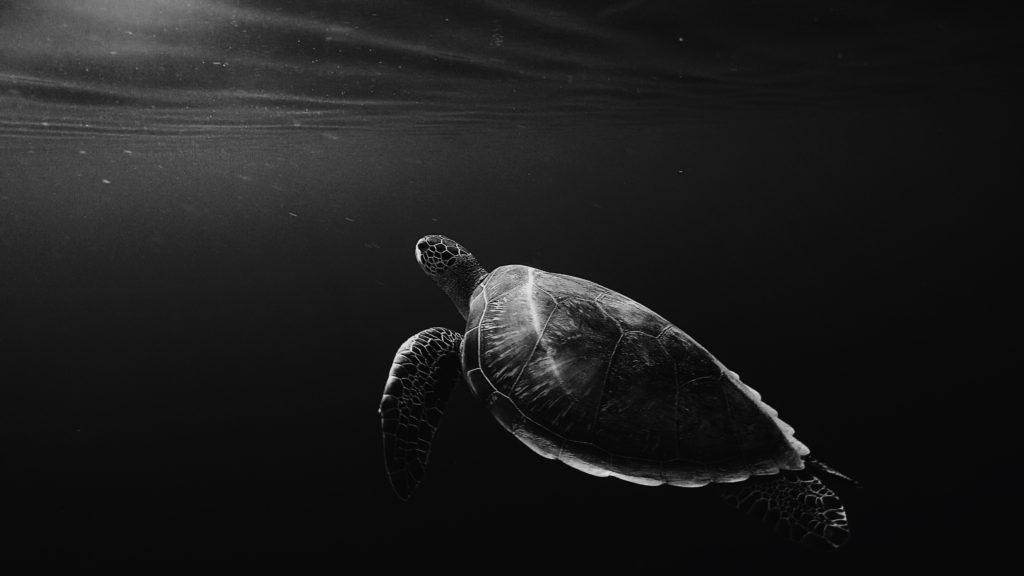
Black Tortoise
Also called Black Turtle, Black Warrior, and Black Tortoise of the North. In Chinese: Xuánwǔ.
The Black Tortoise is one of China’s “Four Guardians” or four symbols of the constellations. It represents North and Winter and is usually depicted as a turtle entwined with a snake. Both the turtle and snake are associated with longevity.
Writing prompt: What if there was a Black Tortoise who didn’t like the cold? What if a Black Tortoise was accidentally associated the South or a different cardinal direction? What if a Black Tortoise wanted to retire?
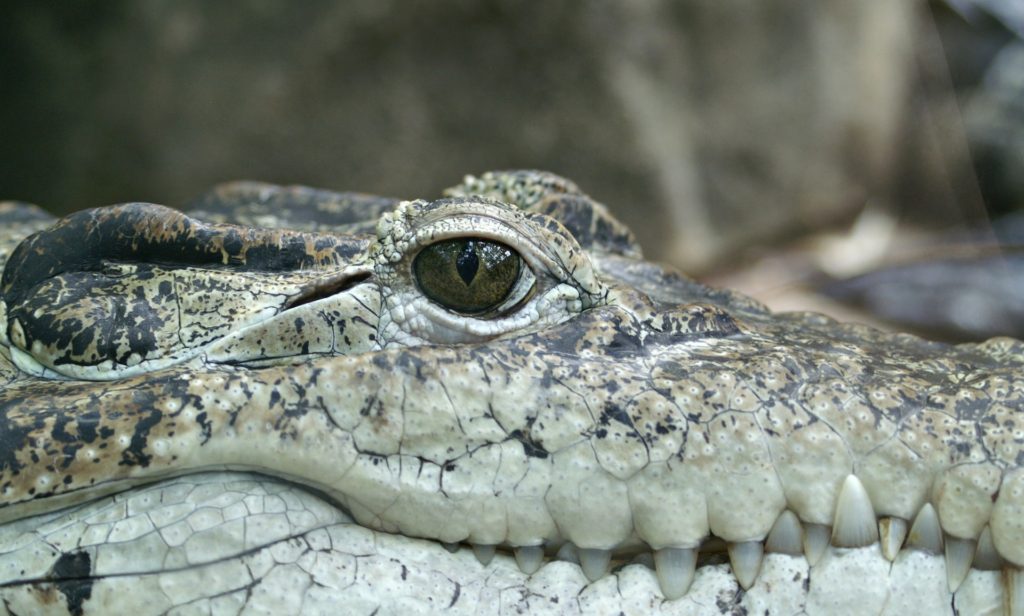
Cipactli
Also called Tlaltecuhtli or Earth Monster.
Cipactli is an asexual sea monster from the Aztecs of Mexico that is part crocodile, part fish, and part frog or toad. It is always hungry and each of its joints contains a mouth. The gods destroyed Cipactli and created the earth out of its body.
Writing prompt: What if Cipactli was given enough to eat so didn’t need to be hungry? What if someone befriended Cipactli so they didn’t need to be alone? What if the other gods were destructive and Cipactli was the one to create the world by sacrificing themself?
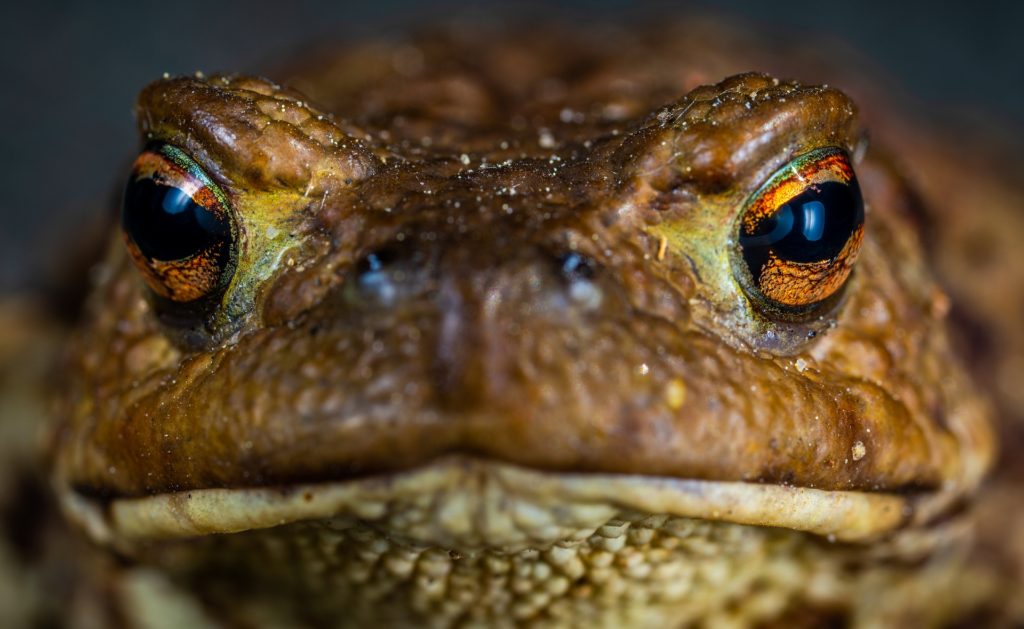
Whowie
The Whowie is a lizard monster from Australian Aboriginal mythology. It is a giant lizard with a toad’s head and six powerful legs. The Whowie is slow but its trampling can alter the terrain and it can eat an entire village in one sitting.
Writing prompt: What if someone (or something) was controlling the Whowie? What if the Whowie was simply lost and wanted to get home? What if there was a whole group of Whowies?
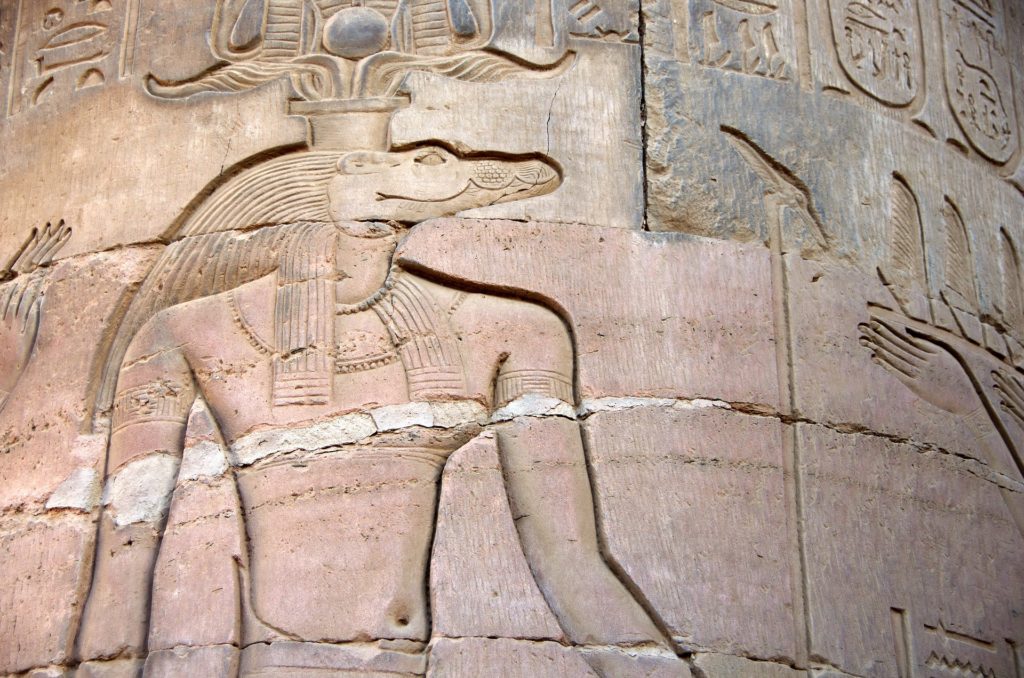
Sobek
Also called Sebek, Sebek-Ra, Sobeq, Sochet, Sobki, or Sobk.
Sobek is an Egyptian diety depicted either as a crocodile or as a human with the head of a crocodile. He is known to be fierce and violent and is associated with the military and the power of pharaoh, yet this power is also associated with protection, specifically from the dangers of the Nile. Sobek is sometimes credited with the creation of the world, with the Nile being created from his sweat, and he is associated with fertility.
Writing prompt: What if Sobek grew tired of violence and decided to stay home and raise a family? What if Sobek’s power was contingent upon certain temperatures, similar to the crocodile?
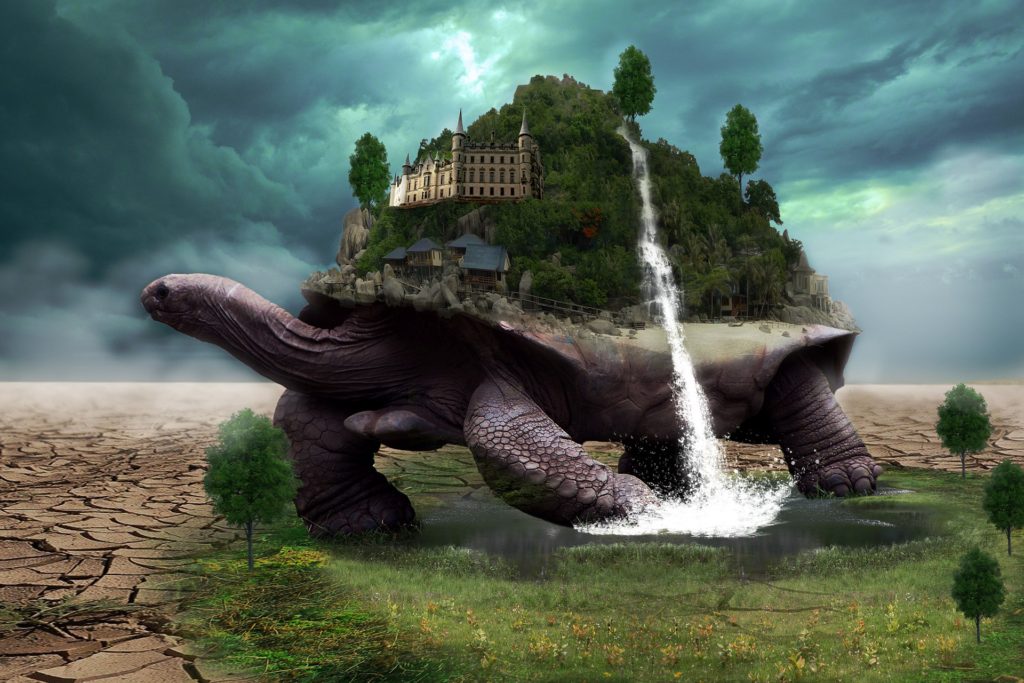
World turtle
Also called Cosmic Turtle or World-Bearing Turtle.
The World Turtle is a common fixture in myth and appears in many forms. It is thought to support or contain the world, which is often depicted on its back.
Writing prompt: What if there were multiple World Turtles holding multiple worlds? What if a young World Turtle had to prove itself strong enough to carry its own world? What if a World Turtle was sick and needed to be cared for in order to save the world on its back?
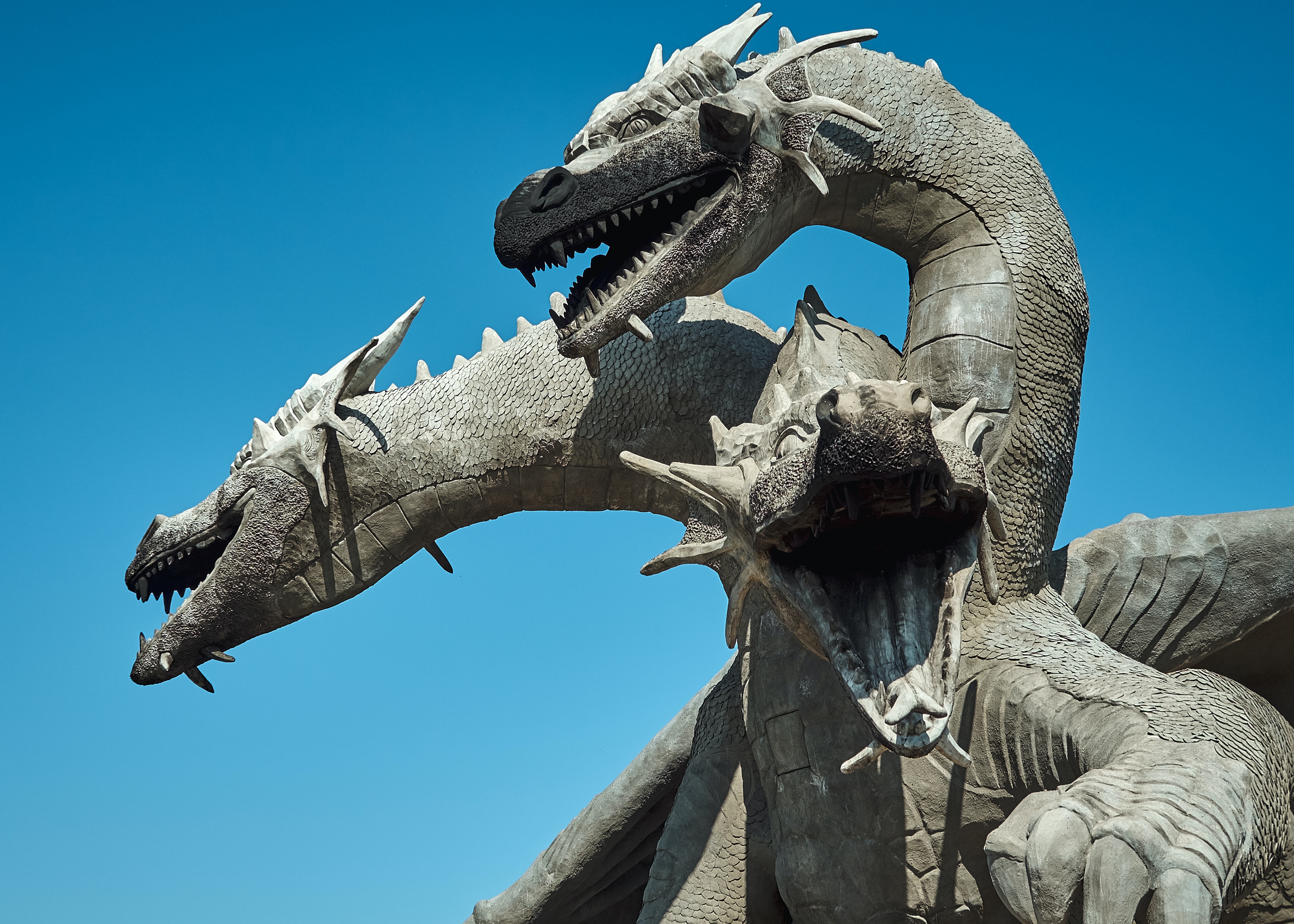
Yamata no Orochi
Also called Orochi.
Yamata no Orochi is a Japanese eight-headed and eight-tailed serpent that was a large as eight hills and eight valleys. Each year it would devour a daughter from a husband and wife of Earthly Deities. Its weakness was eight-fold refined liquor which it drank and passed out, allowing it to be killed. A magical sword was then found in its tail.
Writing prompt: What if Yamata no Orochi was actually protecting the country from the family of Earthly Deities? What if Yamata no Orochi was minding its own business but kept being hunted because of rumors of the sword in its tail?
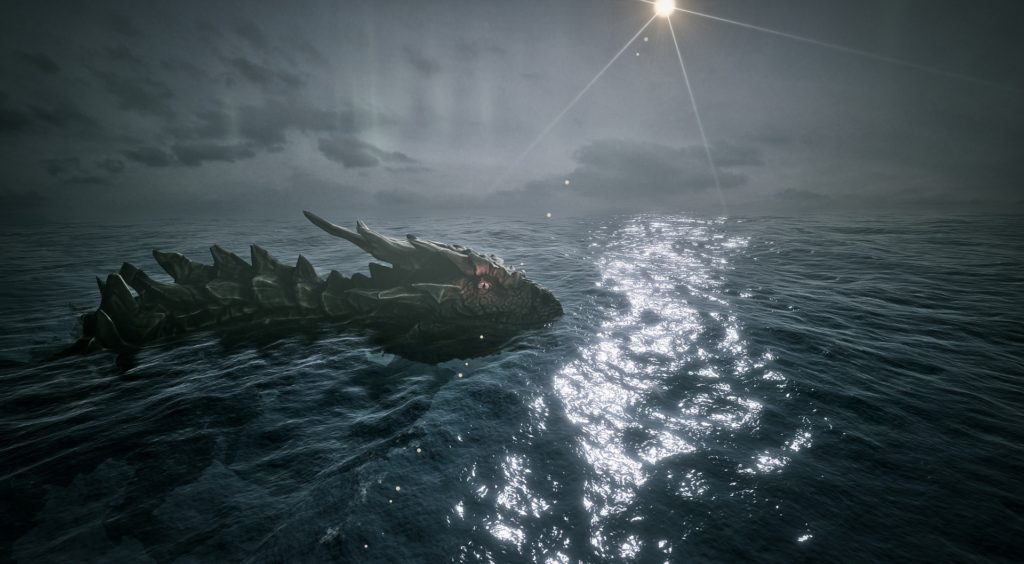
Taniwha
The Taniwha are large creatures from Māori mythology of New Zealand. They are often depicted as giant lizards or possibly resembling a shark and can be found in dark, deep, and deadly places such as caves, river pools, or the ocean. Taniwha may be either respected and protective guardians or they may be dangerous and predatory creatures that kidnap and eat humans. Offerings may be made to appease guardian Taniwha, such as a green twig or the first sweet potato or taro of the harvest.
Writing prompt: What if certain people could communicate with the Taniwha? Maybe even train and ride them? What if some guardianTaniwha were protecting the humans from other predatory Taniwha? What if the Taniwha essentially just see humans as their pets?
Each of these creatures is fascinating in its own right- which is your favorite? 🙂

